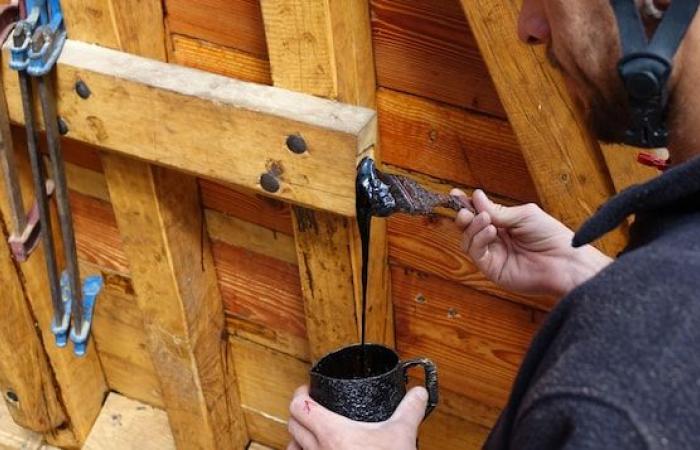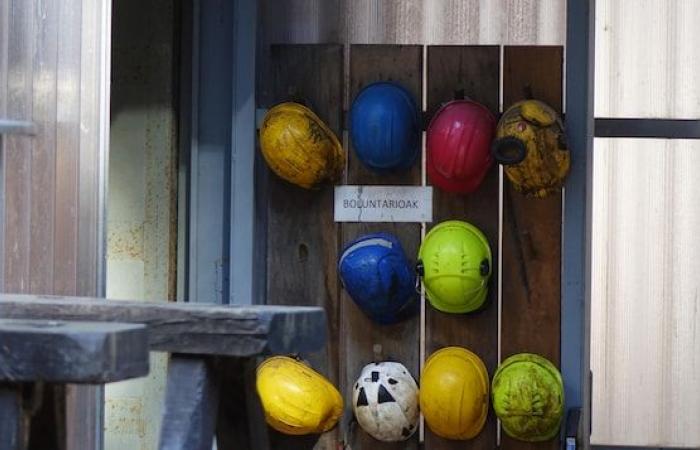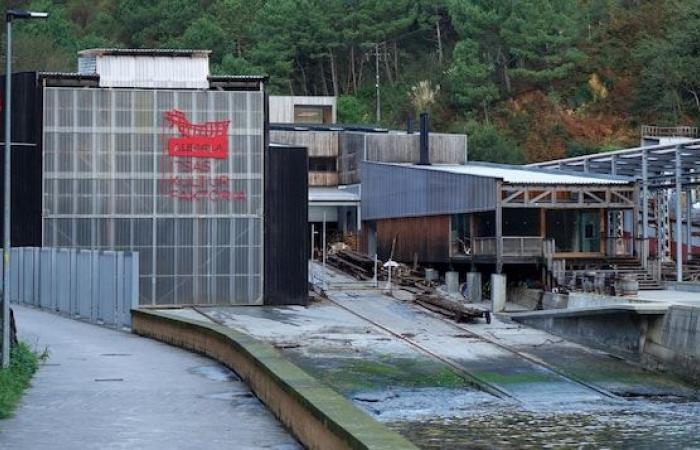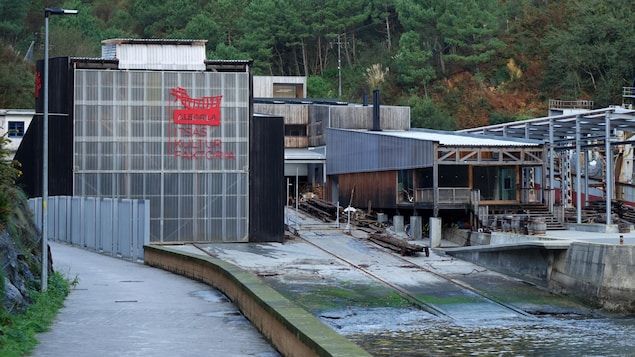By transmitting the Grenier team’s scientific file to the Albaola, Parks Canada requested that the ship be reconstructed as it was at the time. Therefore, Basque workers use the tools and technology of 400 years ago as much as possible. Although the team, which currently includes around thirty professionals and volunteers, has already used a crane, almost everything is done by hand.
Workers also have to experiment, from time to time. Sometimes, despite the monk’s work of Canadian archaeologists, the expertise the team is looking for does not exist. There is no one who is there, alive, to tell me how to do the galleon
underlines Xabi Agote, under the hammer blows of a carpenter working on the bow of the ship.
We do what we call experimental archeology
adds the president of Albaola, his feet surrounded by sawdust. It is a way of relearning this lost knowledge, of reviving this knowledge through experimentation.
Loading
1/ of 3
See previous image
See the following image
Despite the many challenges to overcome, the galleon’s hull and decks are almost built, their planks held in place with iron nails and waterproofed with a brown layer of sticky tar. The masts will be installed in the coming months.
Progress is slow because the team cannot devote themselves to the galleon full time. Indeed, to help finance the Saint Johnworkers build other small boats in parallel. In addition, a balcony surrounds the construction site to allow tourists to observe the work, another way of paying for the replica, for which public subsidies and funds from UNESCO are also paid. Overall, the project has a budget of approximately $1 million per year.
We do a lot with few means
maintains Xabi Agote, adding that several materials, including 300 oak trees, were donated to Albaola, which also helps reduce costs.
Emission All terrain
8 minutes 50 seconds08:50
Crossing the North Atlantic once again
The timetable for reconstruction and the possible crossing of the North Atlantic has already been postponed several times, in particular because of the pandemic. Xabi Agote assures that he finally sees the light at the end of the tunnel, while recognizing that there is still a lot of work to do.
The team must make the entire sail, kilometers of rope and the anchors, the largest of which will be 5 meters long. The ship must also be equipped with hundreds of barrels – the barrels used to transport oil – and five whaling boats, the small boats used to hunt Greenland whales and right whales, the species hunted by the Basques because they floated once shot.
We are going to recreate a 16th century universe
says Xabi Agote, emphasizing that the crew’s clothing will be designed in collaboration with the Madrid Clothing Museum. Even the food and cider that the sailors will consume will be the same as in the 16th century.
The Albaola team hopes to launch the boat next year, then train the crew, conduct sea trials and make any other necessary preparations before crossing the North Atlantic, a journey which could take place in 2026.
I wonder if we will have to postpone this until 2027 because I realize that the task is very important
confides Xabi Agote. However, he affirms that a committee made up of Spanish and Canadian representatives was formed last June and that it is currently looking into financing the crossing and organizing the reception of the whaler and its crew in Red Bay. He is categorical: the trip he has dreamed of for 40 years will happen.
The challenge is enormous
he recognizes, his eyes turned, once again, towards Labrador. But for me, it is the greatest tribute I can pay to our ancestors and to all Canadians, because it is because of Canada that we do this.
This report was produced thanks to a grant from the EU-Canada Prize for Young Journalists.









